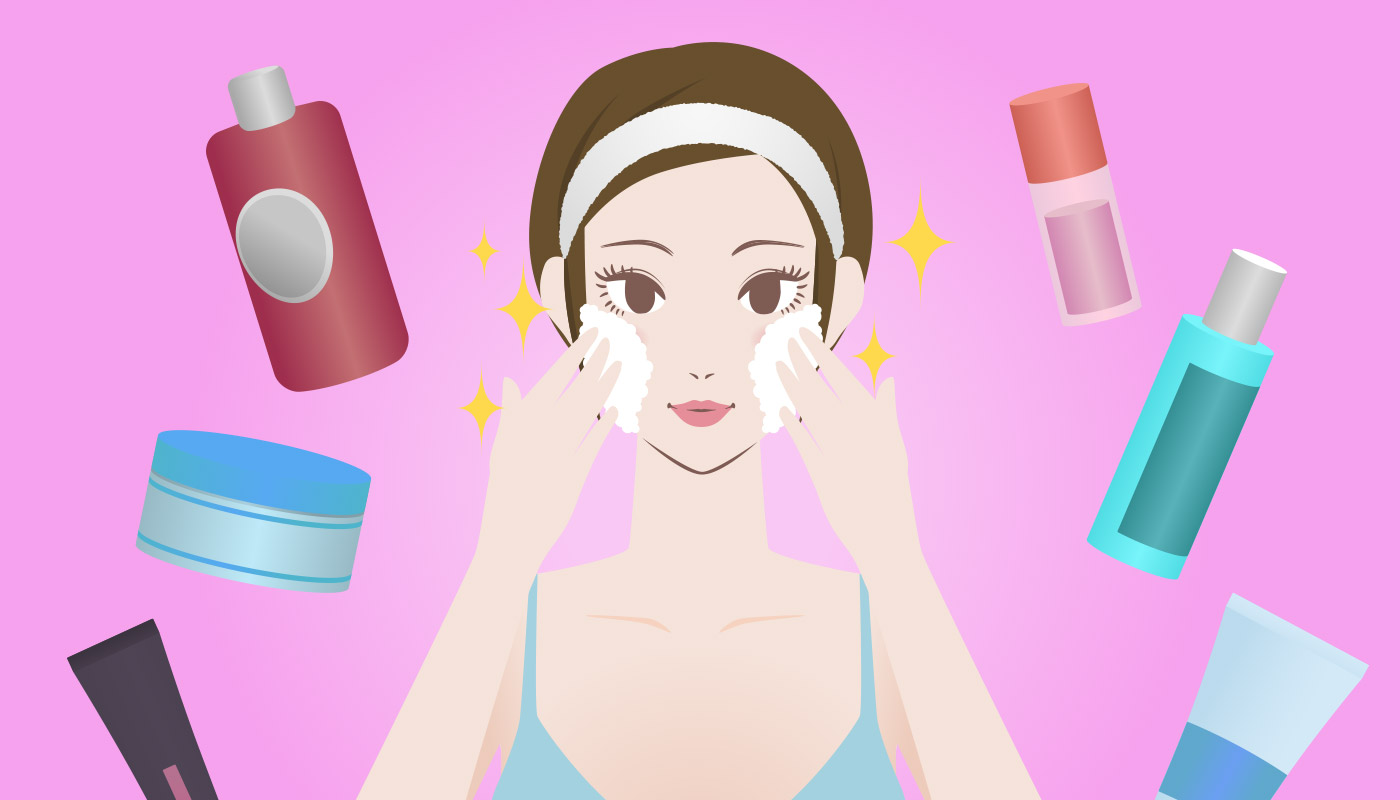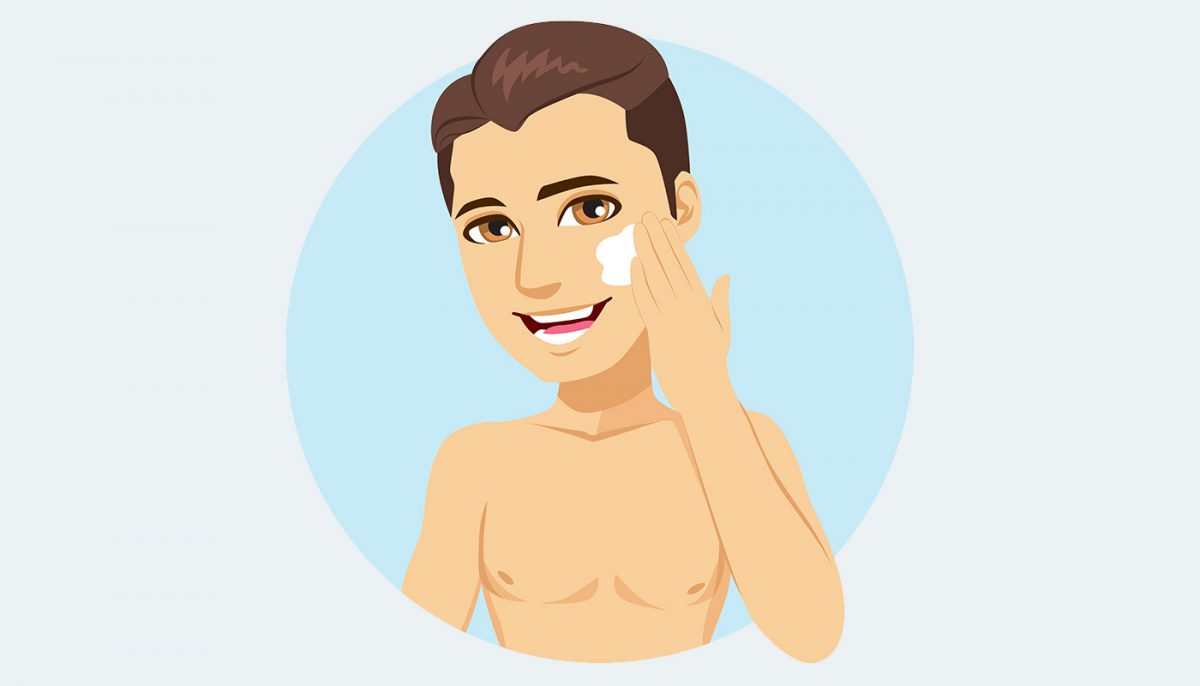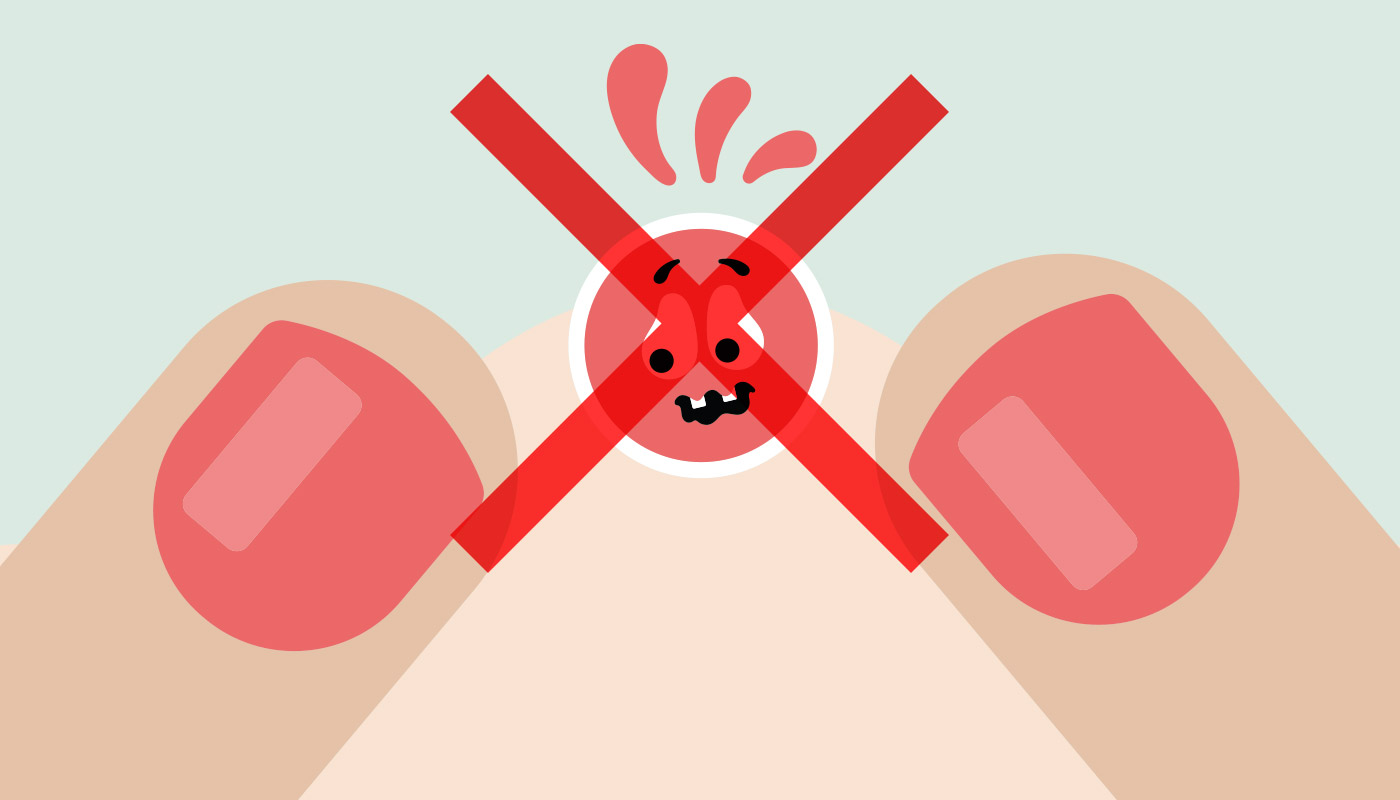Home » Acne Treatments » Skin Care For Acne
Skin Care For Acne
Simple acne skin care is best
Everyone’s skin is different, but a simple skin care routine is always best when managing acne.
Focus on three main steps: cleanse, treat, protect.
Importantly, you don’t need to spend a lot of money on skin care products to get great results!
Cleanse, treat, protect
This is a simple acne skin care routine.
Add to this some tips on what to avoid and how to use make-up to camouflage those spots and you’ve got the foundation for good skin care.
Follow these general steps and recommendations below – unless your health professional suggests something different for your specific needs.
Cleanse

To stop redness, help skin heal and reduce oil production, it’s essential to wash your face once or twice a day with an appropriate cleanser.
Look for a mild ‘soap free’ liquid face cleanser that’s pH balanced at 5.5 or slightly acidic between 4-6 to match the pH of the skin such as Avéne’s Cleanance Cleansing Gel. It’s important to check that it has no abrasives, detergents or alcohol. This is usually listed as ‘non-irritating’, ‘non comedogenic’, ‘non acnegenic’ or ‘non allergenic’.
If you have oily skin, look for a cleanser that is ‘low residue’ or ‘lipid-free’. This means it won’t leave a surface film on your skin. It contains only enough moisturiser to protect the skin from irritation and damage during cleansing. Options include Cetaphil Pro Acne Prone Oil Control Foam Wash or Azclear Action Foaming Wash.
If you have combination, dry, sensitive or irritated skin, or if you’re using acne treatments containing benzoyl peroxide, tretinoin, adapalene and/or tazarotene, look for a ‘gentle oil-free plus moisturising’ liquid cleanser.
Moisturising liquid cleansers have added moisturisers (like cetyl alcohol or glycerine) that help protect the skin and speed up its repair and recovery if it’s dry and irritated. Examples include Cetaphil Gentle Skin Cleanser or Bioderma Sensibio Gel Moussant Mild Cleansing.
It’s best to avoid moisturising cleansers that have high levels of paraffin, mineral or fragrant ‘natural’ oils because they can block pores which can lead to acne.
Also avoid washing your face several times a day or vigorously scrubbing as this can worsen your acne by irritating your face.
Salicylic acid containing cleansers
Salicylic acid works by breaking down sebum to help unblock pores. Salicylic acid also helps dissolve, remove and prevent the formation of the keratin plug, which can help speed up the clearing of open and closed blackheads as well as improve long-term control.
Cleansing products that contain salicylic acid include La Roche-Posay Effaclar Micro-Peeling Purifying Gel Cleanser.
For people with mild acne, a cleanser with salicylic acid might be all you need for your everyday routine.
Remember to speak with a pharmacist or doctor before combining this with any other medicated products (such as prescription acne products or those containing benzoyl peroxide)
Treat

Skin care treatments include over-the-counter creams, gels or lotions, and those prescribed by your GP or dermatologist.
It’s best to apply these once your skin has completely dried after cleansing because if you apply treatments to moist skin they’re more likely to cause irritation.
You’ll get the greatest benefit if you apply your acne cream, gel or lotion to the entire skin region where you normally develop pimples. This may include your face, chest and back.
This is because these treatments also help to prevent new pimples from forming.
A small pea-sized amount is usually all you need to treat the entire face.
Be careful not to apply these treatments to sensitive skin areas (which are not usually affected by acne) such as the skin immediately around your eyes, lips and nostrils.
If you are concerned about the cost of applying your acne cream / gel to multiple areas, you can try Simple soap or a salicylic acid wash for your chest and/or back.
It’s important to follow the instructions for applying these treatments and to check for any possible side effects such as increased sensitivity to the sun, or clothing stains.
Protect

Sun Protection
In Australia, the harmful effects of sunlight far outweigh any potential minor benefits in treating acne. There is also a lack of convincing evidence that natural sunlight exposure improves acne.
Sunscreens For Acne Prone Skin
Benefits of the latest sunscreens include:
- They don’t clog pores (non-comedogenic)
- They’re unlikely to cause skin allergies (hypo-allergenic)
- They’re non-irritating
- They provide longer lasting protection
- They provide very good UVA and UVB protection
Good UVA and UVB protection is very important for people using benzoyl peroxide, tretinoin, adapalene, isotretinoin or doxycycline for their acne.
These treatments increase sensitivity of the skin to the harmful effects of UVA which include sunburn, wrinkles, blotchy pigmentation, skin growths, broken capillaries and thinner, more fragile skin.
Physical blockers (titanium dioxide and zinc oxide which give the sunscreens containing them an opaque look) also provide good UVA protection.
Many ‘oil free’ SPF30+ or SPF50+ broad spectrum sunscreen products containing physical blockers are relatively heavy creams and may worsen acne. Only those labelled as non-comedogenic are suitable for acne prone skin.
Cream formulations are improving with new sunscreen ingredients. Look for sunscreens that have mexoryl SX and XL, bisoctrizole and/or bemotrizinol in the list of active ingredients. Examples include LaRoche-Posay’s Anthelios XL Dry Touch SPF50+, Avéne’s Sunscreen Emulsion SPF50+ and Cetaphil Sun SPF50+.
Tips For Moisturising
Since most people with acne tend to have oilier skin, a gentle cleanser with a light moisturising action is all you need.
However a light, oil-free and non-comedogenic moisturiser can be beneficial if you have combination, dry sensitive or irritated skin. If you have very oily skin, you’re unlikely to benefit from a moisturiser.
It’s very important not to over-use moisturisers because this can make your acne worse.
In the evening, only apply a moisturiser to acne affected areas if they are dry or irritated (red, flaky, and/or itchy). You may also want to apply to sensitive skin areas not affected by acne such as around the eyes, sides of face, and the skin next to lips and nostrils, along with the neck.
For mildly irritated skin you should normally apply your oil-free, non-comedogenic moisturiser over the top of acne treatment creams. However, if irritation is still a problem and causing your skin to sting, burn or itch, try applying the moisturiser before applying your acne medication.
Makeup

Wearing make-up can make you feel more confident – especially if it helps conceal acne redness and blemishes.
Most cosmetic brands carry products designed for acne prone skin so look out for these and you won’t have to worry about making your skin worse.
Liquid Foundations
These products are typically labelled as oil-based, water-based, oil-free, oil-control or matte-finish.
Where possible, choose oil-free and matte-finish products (which also tend to be oil-free).
Oil-control products are not necessarily oil-free but they contain blotting ingredients such as talc, kaolin or starch to help absorb excess sebum.
Face Powders
Face powders used to be something our grandmothers wore straight over their moisturisers until liquid foundations became the norm.
Recently, powders have been increasing in popularity, especially mineral make-up ranges. Powders are great at helping conceal skin imperfections.
Mineral powders don’t settle into the pores of the skin and are therefore non-comedogenic. They give a smooth, matte finish and help control oil. They also give good coverage and reduce the redness associated with acne. Some also have additional soothing agents.
Mineral make-up also contains physical sunscreens such as titanium or zinc oxides.
Concealers
If you have acne you might need a range of concealers in your make-up kit.
A lightweight concealer may be enough for everyday use, but a heavier concealer may be best for problem areas.
Concealers with a green base help camouflage redness. Some also contain acne fighting ingredients such as salicylic acid so they can help treat your acne at the same time as hiding it.
Blush
Some of the red colour in blush comes from ingredients known as D&C pigments. This can cause pores to block so it’s best to avoid it if you have acne.
Instead, look for products that use carmine as the colourant. Powders and gels are better than heavier cream blush.
Also avoid shimmery products – an effect caused by mica particles in blush and eye shadows. Mica can block the pores and cause skin irritation.
Other acne skin care tips to consider

Despite the major temptation, squeezing, picking or scratching your acne will only make things worse. Treatment will work slower and you risk both pigmentation and scarring.
Toners are a ‘no go’ zone when treating acne.
Toners may help to remove make-up, but they also irritate the skin and add to the inflammation associated with acne.
Micellar water is a better option for removing make-up. It leaves skin feeling soft and hydrated without causing irritation. Micellar water is great for all skin types too and is particularly suited to people with oily or sensitive skin.
When acne involves the beard area, careful shaving is the key to avoiding irritation and inflammation that will worsen your acne.
Some helpful shaving tips include:
Moisten the hairs for a few minutes prior to shaving by applying a liberal coating of moisturiser. Use a shaving cream or gel designed for sensitive skin, mixing it with a small amount of warm water before applying onto the skin.
- Stick to double or triple blade razors
- Apply light pressure as you shave. Two light passes are better than one aggressive pass
- Change the blade or device regularly to ensure the blades always remain sharp
- Shave over and around pimples, not through them!
- Avoid giving up on treatments too soon
Your acne will not respond to treatment and good skin care in a day or two or even a week or two. Over-the-counter and prescription medication need a minimum of 6-12 weeks before you’ll see a significant improvement with your acne but you should see some improvement along the way.
More Is Not Better
Applying more skin care or treatment than recommended doesn’t mean your acne will clear any faster.
Instead, over treating may lead to stinging, irritation and dermatitis which will make your acne look worse and slow down overall improvement.
How much do you REALLY know about acne?
It’s amazing there are still so many myths about acne. It seems the more information, the more confusion, which can feel really frustrating.
Take our quiz to get your zit mythbusting score and check your acne facts.

